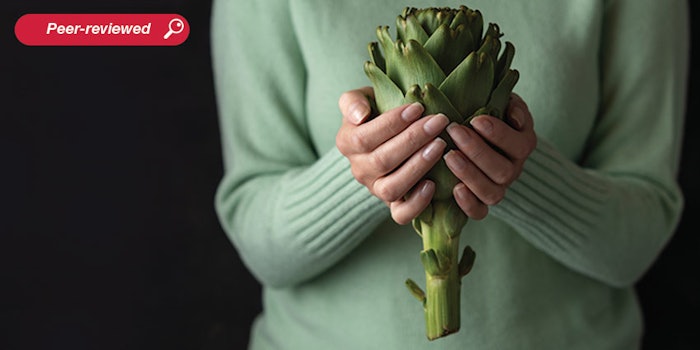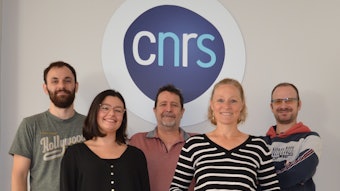
Read the full article in the July/August 2021 digital edition. . .
Recently, interest in upcycling organic material such as agricultural and food waste into valuable ingredients including cosmetic actives and polymers has increased.1-3 Waste disposal has been associated with greenhouse gas emissions and pollution.4 Therefore, the possibility to convert waste or waste byproducts of industrial production into new products with commercial value fits well into the growing trend for sustainability and the circular economy. And opportunity abounds, considering waste accumulates throughout the food supply chain — from initial agricultural production to manufacturing and final household consumption, as evidenced by one European Union report on food waste. 2
Although the proportion of food waste in different phases of the supply chain varies per country, agriculture, manufacturing and household are at the top, overall, for food waste.2 The Food
and Agriculture Organization estimates that 20-30% of fruits and vegetables are discarded as waste during post-harvest handling.3 In 2012, the quantity of agricultural waste derived from various supply chains was approximately 90 million tons of oil equivalent (MTOE), and this waste accounted for about 50% of the fresh weight of harvested crops. No other waste stream tops agriculture waste; municipal solid waste is far behind, with 57 MTOE.5
Opportunities in Artichoke
Artichoke (Cynara scolymus) provides one example of agricultural waste with cosmetic potential. This perennial plant belongs to the Asteraceae family and originates from the Mediterranean region. The world production of artichoke accounts for approximately 1,678 kilotons; Italy is the largest producer, at 390 kilotons.6 Artichoke is characterized by a high content of bioactive compounds including phenols, inulin, fibers and minerals.6-8 The heads (flowers) and stems just below the flower constitute the edible part of the plant.
During harvesting, non-edible waste biomass is produced, which is unsuitable for human consumption. This biomass is composed of both bracts and stems cut during the harvesting process, and also remaining leaves, stalks and roots that are usually disposed of as solid waste or left in the field without any further valorization. About 60-85% of the artichoke biomass (i.e., bracts, exterior leaves and stalks/stems) is considered non-edible and is wasted.6, 8 This biomass is rich in phenolic components, the main actives being chlorogenic acid, luteolin-7-O-rutinoside and luteolin-7-O-glucoside. Other minor components identified include cynarin, luteolin, apigenin-7-O-glucoside, apigenin-7-O-rutinoside and naringenin-7-O-glucoside.9
Artichoke extracts from different parts of the plant have shown multiple health benefits and have been used for centuries.10 In the 1960s, an extract rich in cynarin was found to have liver-protecting activity.11 The high amounts of the prebiotic inulin in the bracts and stem have potential use in gut health.12 Artichoke extract also has shown antioxidant and antimicrobial properties due to high concentration of polyphenols,13 suggesting potential applications in topical treatments as well.
More recently, a stem-derived aqueous artichoke extract containing chlorogenic acid was found to inhibit the formation of advanced glycation end products (AGEs) in a series of chemical assays, suggesting the extract could act as a potential antiglycative agent.14 To further explore this potential for cosmetic applications, agricultural-derived artichoke bract/stem waste was sourced and processed via a technique to obtain an extract rich in polyphenols. This extract was tested as described next in an in vitro cellular model to assay its antiglycation potential in a biological system, and in a double-blind, placebo-controlled clinical study to measure its effects on the formation of AGEs, elasticity and firmness in skin.
Materials and Methods
Artichoke stems: For the present work, artichoke stems typically recycled as compost were sourced from a local artichoke production farm in southern Italy.
Extraction, processing and characterization: A pulsed electric field (PEF) extraction process was utilized,15 whereby stems were exposed to an electric field of moderate intensity (0.5-10 kV/cm) and relatively low energy (1-10 kJ/kg) applied in the form of repetitive, short voltage pulses. This treatment increases membrane permeability, facilitating the release of active molecules from the inner parts of the plant cells. This extraction was followed by lyophilization to obtain a dark crystalline powder. Analysis of the powder by HPLC showed the presence of high amounts of chlorogenic acid as the main active ingredient (data not shown); its presence as one of the main phenolic acids in artichoke has been previously documented.9, 16
Cellular assay: Human keratinocytes (HaCaT) were seeded in 6-well plates at 150,000 cell/cm2 (supplemented with DMEM, SVF 2% and maintained at 37°C, 5% CO2). Cells were then pre-incubated for 24 hr with 0.02% or 0.05% artichoke stem extract in 1× PBS buffer (pH 7.4) before exposure to UV-A irradiation (2.6 J/cm2; λ = 365 nm). Recovery after UV-irradiation was for 3 hr in a freshly renewed DMEM (SVF 2%).
Cells were then detached from plates and centrifugated. AGEs were extracted from cellular pellets using an extraction buffer (100 mM Tris, pH 7.4; 150 mM NaCl; 1 mM EGTA; 1 mM EDTA; 1% octoxynol-9; 0.5% sodium deoxycholate). Total protein quantification was assessed by the Bradford method to ensure equal amounts of protein extracts for each experimental sample.
The colorimetric ELISA-based assay was used to quantify AGEs adducts in each protein sample by comparing its absorbance at 450 nm with that of a known AGE-BSA standard curve. A relative value of AGEs per experimental group was obtained in comparison with the control group.
The instrumental data for the in vitro study was evaluated statistically using ANOVA.
Clinical Testing
Twenty-four healthy Caucasian females of all skin types between the ages of 40-75 were recruited and instrumental evaluations of skin AGEs, elasticity and firmness were conducted at the start of the study. From Day 1 to Day 56, volunteers then applied a water-based serum containing the artichoke extracta and the same serum without the extract (placebo) at home, each on the volar surface of one forearm twice daily according to a previously defined randomization scheme; instructions were provided by the investigator. The study was double-blinded and statistical analyses were made per the student’s t-test. On Day 21 and Day 56, additional instrumental evaluations of skin AGEs, elasticity and firmness were made.
. . .Read more in the July/August 2021 digital edition. . .
References
- Dell’Acqua, G. (2017, Feb). Garbage to glamour: recycling food by-products for skin care. Cosmet Toil 132(2) 28-37.
- Dell’Acqua, G. (2018). Recycling natural by-products from food and agriculture waste into powerful active ingredients for cosmetic applications. H&PC Today 13(3) 16-19.
- Maraveas, C. (2020). Production of sustainable and biodegradable polymers from agricultural waste. Polymers (Basel) 12(5) 1127.
- Poore, J. and Nemecek, T. (2018). Reducing food's environmental impacts through producers and consumers. Science 360(6392) 987-992.
- Gontard, N., Sonesson U. and Birkved, M. (2018). A research challenge vision regarding management of agricultural waste in a circular bio-based economy. Crit Rev Environ Sci Technol 48 614-654.
- Lattanzio, V., Kroon, P.A., Linsalata, V. and Cardinali, A. (2009). Globe artichoke: A functional food and source of nutraceutical ingredients. J Funct Foods 1. 131-134.
- Zuorro, A., Maffei, G. and Lavecchia, R. (2016). Reuse potential of artichoke (Cynara scolimus L.) waste for the recovery of phenolic compounds and bioenergy. J Clean Prod 111 279-284.
- Goñi, I. and Hervert-Hernández, D. (2011). By-products from plant foods are sources of dietary fibre and antioxidants, phytochemicals. In: Phytochemicals Bioactivities and Impact on Health. Intech, Chapter 4. 95-116.
- Jiménez-Moreno, N., et al. (2019). Phenolic composition of artichoke waste and its antioxidant capacity on differentiated caco-2 cells. Nutrients 11 1723.
- Ernst, E. (1995). The artichoke—a welfare plant with history and future prospects. Naturamed 10 30-35.
- Rondanelli, M., Monteferrario, F., Perna, S., Faliva, M.A. and Opizzi, A. (2013). Health-promoting properties of artichoke in preventing cardiovascular disease by its lipidic and glycemic-reducing action. Monaldi Arch Chest Dis 80 17-26.
- Zeaiter, Z., Regonesi, M.E., Cavini, S., Labra, M., Sello, G. and Di Gennaro, P. (2019, Sep 25). Extraction and Characterization of Inulin-Type Fructans from Artichoke Wastes and Their Effect on the Growth of Intestinal Bacteria Associated with Health. Biomed Res Int. Available at: https://pubmed.ncbi.nlm.nih.gov/31662964/
- El Sohaimy, S.A. (2014). Chemical composition, antioxidant and antimicrobial potential of artichoke. Open Nutraceuticals J 7 15-20.
- Maietta, M., et al. (2017). Artichoke (Cynara cardunculus L. var. scolymus) waste as a natural source of carbonyl trapping and antiglycative agents. Food Res Int 100(1) 780-790.
- Baiano, A. and Del Nobile, M.A. (2016). Antioxidant compounds from vegetable matrices: biosynthesis, occurrence, and extraction systems. Crit Rev Food Sci Nutr 56 2053-2068.
- Pandino, G., Lombardo, S., Mauromicale, G. and Williamson, G. (2011). Profile of polyphenols and phenolic acids in bracts and receptacles of globe artichoke (Cynara cardunculus var. scolymus) germplasm. J Food Comp Anal 24 148-153.
a Italine C. (INCI: Water (Aqua) (and) Glycerin (and) Sodium Acrylate/Sodium Acryloyldimethyl Taurate Copolymer (and) Ethylhexylglycerin (and) Phenoxyethanol (and) Cynara Scolymus Extract), Akott Evolution











!['We believe [Byome Derma] will redefine how products are tested, recommended and marketed, moving the industry away from intuition or influence, toward evidence-based personalization.' Pictured: Byome Labs Team](https://img.cosmeticsandtoiletries.com/mindful/allured/workspaces/default/uploads/2025/08/byome-labs-group-photo.AKivj2669s.jpg?auto=format%2Ccompress&crop=focalpoint&fit=crop&fp-x=0.49&fp-y=0.5&fp-z=1&h=191&q=70&w=340)